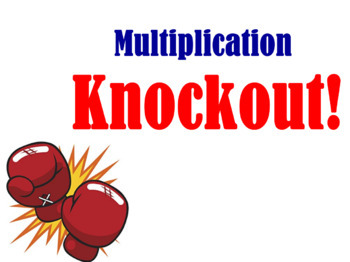Multiplication Knock Out Flipchart Game
Miss T Teaches Two
13 Followers
Grade Levels
2nd - 5th
Subjects
Resource Type
Standards
CCSS3.NBT.A.3
CCSS3.OA.A.1
CCSS3.OA.A.4
CCSS3.OA.B.5
CCSS3.OA.C.7
Formats Included
- Flipchart File
Pages
70 pages
Miss T Teaches Two
13 Followers
What educators are saying
This was a fun game to practice facts. My students want to play it every day. Thank you for a great resource that helps make learning fun.
Description
This is a game for two teams of kids to play. The students will be given a multiplication question and the first team to solve the question gets a point. The flipchart is easy to manipulate and is editable.
Total Pages
70 pages
Answer Key
Not Included
Teaching Duration
30 minutes
Report this resource to TPT
Reported resources will be reviewed by our team. Report this resource to let us know if this resource violates TPT’s content guidelines.
Standards
to see state-specific standards (only available in the US).
CCSS3.NBT.A.3
Multiply one-digit whole numbers by multiples of 10 in the range 10–90 (e.g., 9 × 80, 5 × 60) using strategies based on place value and properties of operations.
CCSS3.OA.A.1
Interpret products of whole numbers, e.g., interpret 5 × 7 as the total number of objects in 5 groups of 7 objects each. For example, describe a context in which a total number of objects can be expressed as 5 × 7.
CCSS3.OA.A.4
Determine the unknown whole number in a multiplication or division equation relating three whole numbers. For example, determine the unknown number that makes the equation true in each of the equations 8 × ? = 48, 5 = __ ÷ 3, 6 × 6 = ?.
CCSS3.OA.B.5
Apply properties of operations as strategies to multiply and divide. Examples: If 6 × 4 = 24 is known, then 4 × 6 = 24 is also known. (Commutative property of multiplication.) 3 × 5 × 2 can be found by 3 × 5 = 15, then 15 × 2 = 30, or by 5 × 2 = 10, then 3 × 10 = 30. (Associative property of multiplication.) Knowing that 8 × 5 = 40 and 8 × 2 = 16, one can find 8 × 7 as 8 × (5 + 2) = (8 × 5) + (8 × 2) = 40 + 16 = 56. (Distributive property.)
CCSS3.OA.C.7
Fluently multiply and divide within 100, using strategies such as the relationship between multiplication and division (e.g., knowing that 8 × 5 = 40, one knows 40 ÷ 5 = 8) or properties of operations. By the end of Grade 3, know from memory all products of two one-digit numbers.




